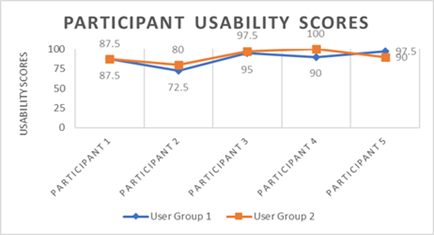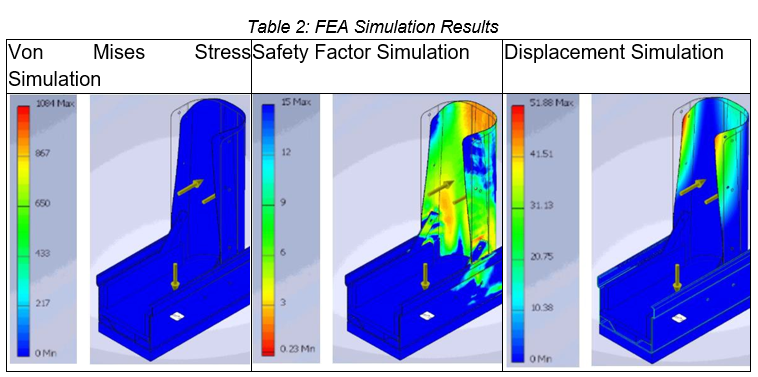





Aliya Singh, Riaan Stopforth
ORCID ID: 0000-0003-1754-447X, 0000-0002-8878-2232
School of Engineering
University of KwaZulu Natal
Durban
South Africa
This research paper details the engineering design process undertaken todevelop an affordable alternative to commercially available orthotic moon boots. The project conceptualisation was conducted using an approach that aligns the design with the key focus of cost-effectiveness and fundamental functionality. Therefore, nonessential, cost-adding, and superfluous factors that are present in the existing production of orthotic moon boots were identified and omitted from this design. Stringent engineering design processes were used to redesign and optimise the materials and methods that are currently employed in the manufacturing of commercially available moon boots. The total cost of production of the redesigned moon boot amounted to R175.90, which was approximately 88% lower than commercial products. Therefore, this research proves to be extremely invaluable as it would widen accessibility to orthotics for various demographics.
Keywords: Affordable, Moon Boot, Orthotic
| μ | Mean |
| σ2 | Variance |
| σ | Standard Deviation |
Moon boots, also known as orthopaedic walker boots, are orthotic devices which are commonly prescribed to assist in the treatment and recovery of patients with a range of leg and foot injuries or diseases. Moon boots target use for the treatment of several injuries such as severe ankle sprains, and fractures of the leg and foot in the fibular, tarsal, metatarsal, and tibial regions (Rizzone & Gregory, 2013).
These devices are also used to facilitate post-surgical management and rehabilitation of tendons and ligaments (Pollo, et al., 1999). They are also utilised by diabetic patients who are subjected to foot-related complications – these patients develop neuropathy or polyneuropathy as their condition progresses, resulting in the loss of sensation in the feet, leading up the lower leg, and ultimately leading to foot ulceration. Moon boots assist in fast healing of diabetes-induced foot ulcerations by decreasing pressure on the feet (Bledsoe & Bledsoe, 2008). In South Africa’s developing economy, most of the population relies heavily on public healthcare. Therefore, acquiring these devices at the current cost of approximately R1 500 is generally unaffordable (Dis-Chem, 2021). As such, the development of an affordable moon boot is vital since it would permit wider accessibility and allow for a larger population of patients to reap the associated health-aligned benefits offered by moon boots. A considerable amount of work has been done in the medical orthosis field to further develop and refine the functionality of moon boots, but there has been little to no tangible results that aim to lower the purchase price of these devices (Arvela, et. al, 2010). Research has indicated that the well as high profit margins that are put in place by producers and retailers. Therefore, by reducing manufacturing costs of moon boots and eliminating the need for third parties, the cost price of moon boots can be significantly lowered for purchase by the customer. This is achieved by constructing the moon boot from less specialised, and commonly accessible components, equipment, and methods; whilst simultaneously ensuring that the functionality, ergonomics, and reliability of the device is comparable to commercially available products.
The materials and methods used in the design of the moon boot alternative are detailed in the subsections below.
i. Materials
The moon boot is constructed entirely from COTS. Therefore, no component requires specialised manufacturing. This aids in maintaining a low manufacturing cost, as the COTS themselves are widely accessible, affordable, and common. The moon boot can be classified into five sub-components, namely the firm L- shaped shell that is fitted along the calf and foot of the patient, reinforcements, lining, fasteners, and a sole. The firm shell structure was achieved through the utilisation of UPVC pipe elements, the padded inner lining was created through a mixture of foam types, i.e., closed cell foam and open cell foam, the non-slip sole was replicated using adhered rubber circles, and the adjustable fastener aspect was achieved by using Velcro straps. The utilisation of two diagonal bracings and a right-angled bracket, which are secured by eight pop rivets, ensures that the moon boot is structurally secure by adding resistance to the lateral load applied by the user, dispersing the load evenly. The bracing also prevents unwanted flexure in the moon boot, and reduces the strain experienced by the primary joint. Strategic placement of the open and closed cell foam layers allows for a comfortable orthotic, due to it being well-cushioned, and shock resistant. Furthermore, the device is designed to be breathable and reduce the degree of discomfort experienced by the user, like commercial moon boots (Amaha, et al.,2017). The use of Velcro straps as the primary fasteners allows for the boot to be put on or removed easily, without requiring the assistance of a third party. This also aids the hygiene of the patient, as the orthotic can easily be removed for cleaning purposes. Additionally, Velcro permits a wide range of adjustability. Overall, the boot is made stronger using bracing, and the likelihood of failure through repetitive use is greatly reduced. The design does not include any component that is fast-diminishing and would require frequent replacement.
ii. Methods
The investigations, experimental testing, and data analysis of the moon boot consisted of two experiments, i.e., a usability test conducted on two user groups and a finite element analysis (FEA) conducted via Solidworks and Autodesk Inventor software. A usability test, as outlined in the International Electrotechnical Commission(IEC) standard IEC 62366-1: 2015 and IEC 62366-2: 2016 by the International Organization for Standardization (ISO), was used to establish a method for testing the effectiveness, efficiency, and user satisfaction of the medical device (ISO, 2015), (ISO, 2016). The test was also used to determine any use errors associated with the device, such that risk management in accordance with ISO 14971: 2007, which was associated with medical devices (ISO, 2007). Experimental testing of the moon boot using FEA software provided a method for observing the structural behaviour and performance of the moon boot over the course of the product’s lifecycle without destructively testing the product (CaliberDesign, 2015).
The results and discussions of Experiment 1 and Experimental 2 are detailed below.
i. Experiment 1: Usability Test
The aim of Experiment 1 was to determine the usability and use errors associated with the moon boot, as per ISO guidelines. For each usability test, there were three people involved, i.e., the test participant, test observer, and test moderator. The test moderator refers to the person who conducted the participant test training, post-test interviews and data analysis. The observer refers to a neutral unbiased person who recorded any comments and criticisms made by a participant during the usability test, and who conducted the usability test questionnaire to ensure that fair and accurate results were obtained. The test participants were split into two user groups, consisting of five participants each, to achieve data and commentary from, firstly, a group representing the general population of people who had no history of lower limb injuries or a professional medical background, and secondly, a group representing the intended users of the moon boot such as people with lower limbinjuries or who had a professional medical background. The overall scores for each user group are illustrated in the graph shown in Figure 1.

The overall scores were analysed using the scale shown in Figure 2 to determine the usability of the moon boot (Bangor, et al., 2008).

Using the scale illustrated in Figure 2 and the graph shown in Figure 1, the usability of the device ranged from 72,5 to 100, with each rated out of 100, which translated to an adjective rating of 'good' to 'best imaginable'. Therefore, it can be concluded that the usability of the moon boot was ultimately successful. However, the validity of the data points was tested further using statistical analysis on both the combined user group scores as summarised in Table 1.

Through the analysis of the statistical data obtained from Table 1, the following observations were made:
ii. Experiment 2
The aim of Experiment 2 was to obtain a low Von Mises stress value, low displacement value, and a high safety factor value using Solidworks Computer Aided Design (CAD) models which were input into Autodesk Inventor software to simulate the behaviour of the moon boot under simulated force values that were much greater than the parameters for which the moon boot was designed, i.e., the moon boot was designed for a patient with a weight of 500N. Therefore, a downward force load of 800N was chosen to simulate the weight of a patient, and a horizontal force load of 400N to simulate the force of a patient’s leg when walking. A constraint was also input on the sole of the moon boot. The results of the Von Mises stress, safety factor anddisplacement simulations are shown in Table 2.

Through the analysis of each simulation, the following observations were made:
The importance of the redesigned affordable orthotic moon boot alternative is reiterated due its role in pain reduction and swelling, and assistance in minimising the period of recovery of intended use patients. The outcomes of the final design illustrate that the redesigned moon boot was ultimately successful and comparable to commercially available orthotics, at a fraction of the cost.
Acknowledgement is given to Professor R. Stopforth, Mr P. Govender, all multidisciplinary professionals, participants and users involved in the design, testing, and evaluation of the moon boot design.
Amaha, K. et al., 2017. Shorter recovery can be achieved from using walking boot after operative treatment of an ankle fracture. Asia-Pacific Journal of Sports Medicine, Arthroscopy, Rehabilitation and Technology, Volume 7, pp. 10-14.doi:10.1016/j.asmart.2016.09.001
Arvela, E. et al., 2010. Arm Vein Conduit vs Prosthetic Graft in Infrainguinal Revascularization for Critical Leg Ischemia. Journal of Vascular Surgery, 52(3),pp. 616-623.doi: 10.1016/j.jvs.2010.04.013
Bangor, A., Kortum, P. T. & J, T. M., 2008. An empirical evaluation of the system usability scale. Journal of Human-Computer Interaction, Volume 6, pp. 574-594. CaliberDesign, 2015. Why Use FEA?. [Online]. Available at: https://www.caliberdesign.co.nz/wp-content/uploads/2015/05/Caliber- Design-HowToGuide-Intro-to-FEA.pdf. [Accessed 23 October 2021].
Bledsoe, G. R. & Bledsoe, B. O., 2008. Walking boot for diabetic and other patients. United States, Patent No. 7,418,755.
Dis-Chem, 2021. Dis-Chem Pharmacies. [Online] Available at: http://www.dischem.co.za/shop-by-department/health/health/assistedliving/immobilisation-and-support/post-op-support [Accessed 29 April 2021].
ISO, 2007. ISO 14971: 2007 Medical devices- Application of risk management to medical devices. [Online]. Available at:https://www.iso.org/standard/38193.html.[Accessed 20 October 2021].
ISO, 2015. ISO Standard No. 62366-1: 2015 Medical Devices-Part 1:Application of usability engineering to medical devices. [Online]. Available athttps://www.iso.org/standard/63179.html.[Accessed 20 October 2021].
ISO, 2016. ISO Standard No. 62366-2: 2016 Medical Devices- Part 2: Guidance on the application of usability engineering to medical devices. [Online].Available at: http://www.iso.org/standard/69126.html. [Accessed 20 October 2021].
Pollo, F. E., Gowling, T. L. & Jackson, R. W., 1999. Walking boot design: A gaitanalysis study. Orthopedics, Volume 22, pp. 503-507.
Rizzone, K. & Gregory, A., 2013. Using Casts, Splints, and Braces in the Emergency Department. Clinical Pediatric Emergency Medicine, 14(4), pp. 340-348.doi: 10.1016/j.cpem.2013.11.003